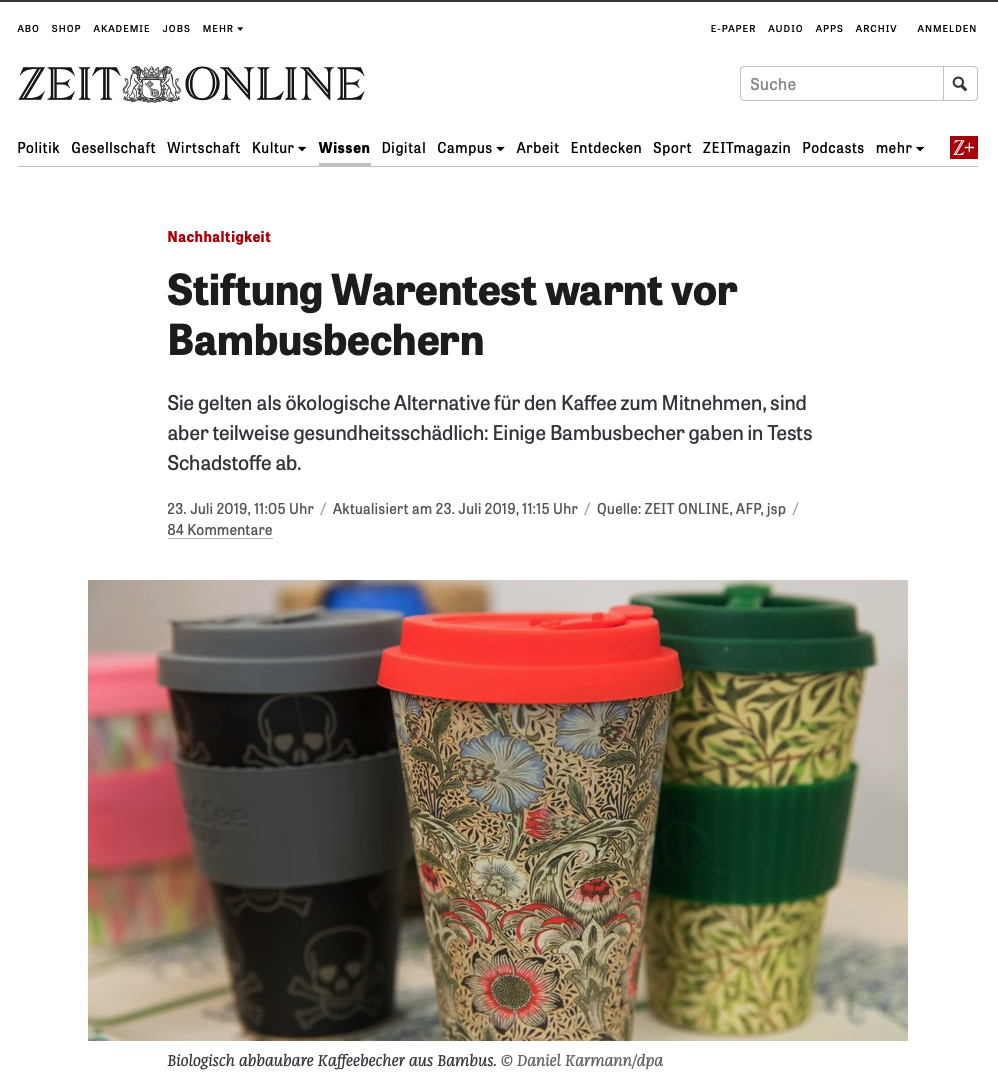Bamboo
Bamboo tableware in the catering trade

In supposedly "trendy" retail outlets, you can still occasionally find crockery, children's tableware, drinking straws and coffee cups made from bamboo. The mostly colourful tableware is advertised as a particularly environmentally friendly and recyclable alternative to paper cups. However, bamboo products are often not as healthy and environmentally friendly as the adverts suggest. In fact, the cups, plates and forks often contain more plastic than bamboo. Many manufacturers either label their products incorrectly, misleadingly or not at all. Stiftung Warentest carried out a test and tested 12 bamboo cups from different manufacturers. All 12 bamboo cups contained plastic. What is even worse: most of the cups tested contained harmful substances that could pose a health risk.

Bamboo tableware consists mainly of finely ground bamboo fibres, formaldehyde and melamine. An adhesive is needed to keep the bamboo fibres in shape. Without glue, the dry bamboo fibres would not hold together. This adhesive is made up of formaldehyde and melamine. These two components together form what is known as melamine resin. This melamine resin is also used for the production of normal melamine tableware. The difference is that bamboo fibres are added to the raw materials during production to give the end product a different appearance. The properties and risks remain the same as for melamine tableware. Bamboo tableware is usually nothing more than well-marketed melamine tableware.

Porcelain provides 100% prevention
(Copyright by n-tv 2019-11-11)
- 100% Food-safe
- 100% Antibacterial
- 100% Mould-free
- 100% Cut-resistant
- 100% fast and easy to clean
- 100% Dishwashersafe
- 100% Splinter-free
- 100% Oven proved
- 100% Microwave safe
- 100% Good guest experience
- 100% Virtually unlimited service life
- 100% Innovation
- 100% Prevention
- 100% Gastronomic responsibility
